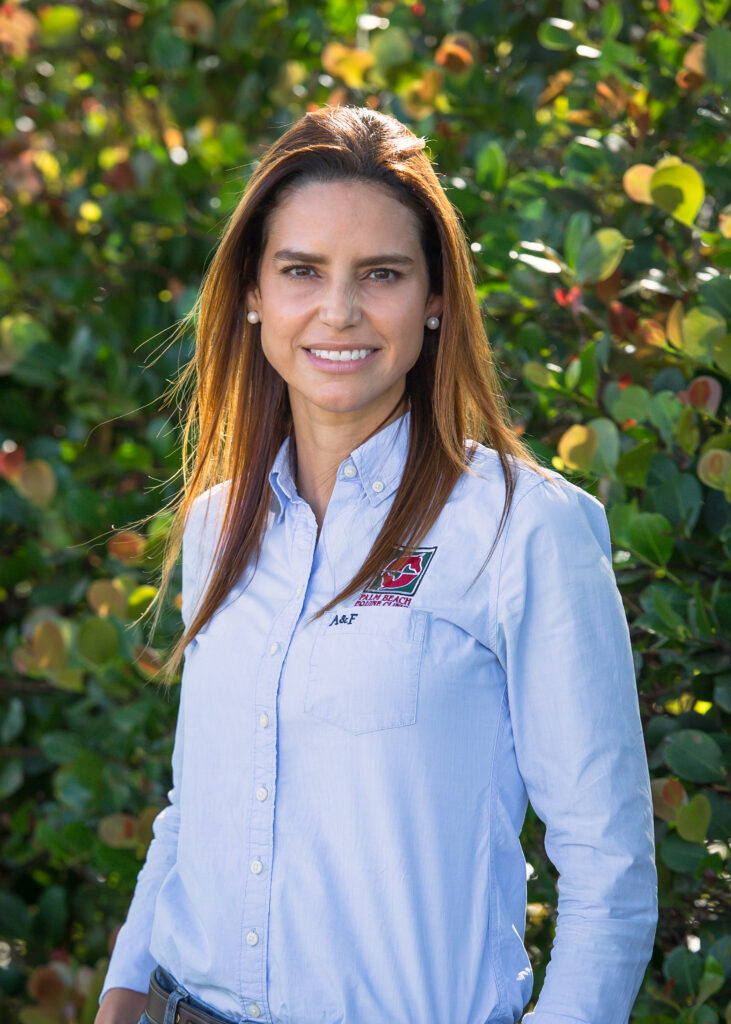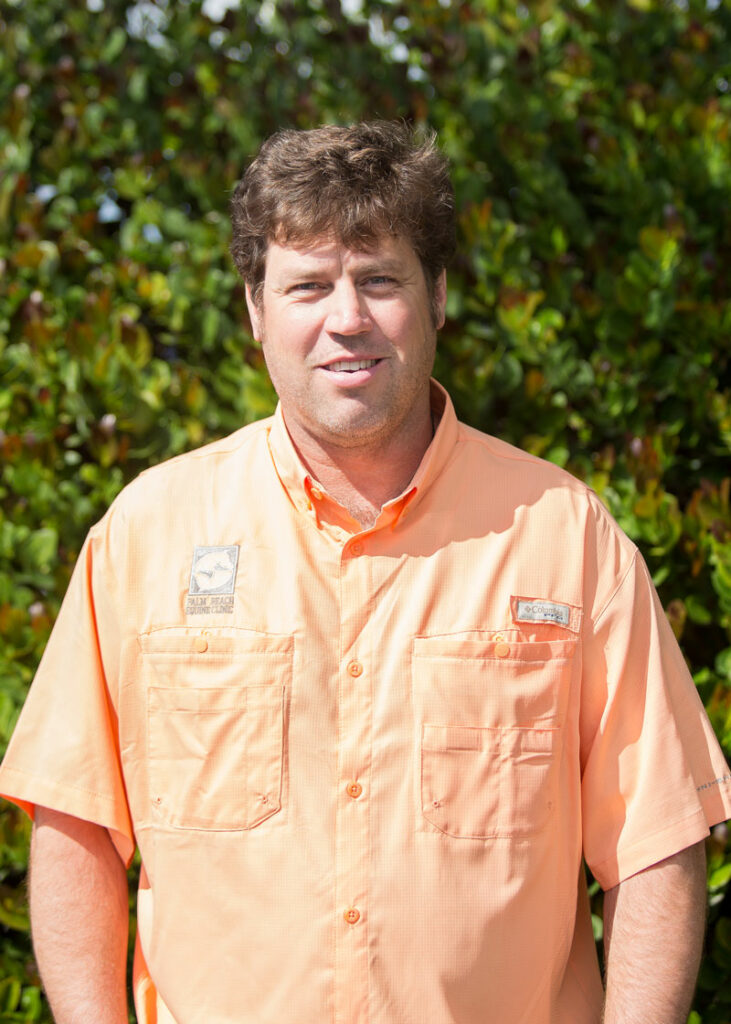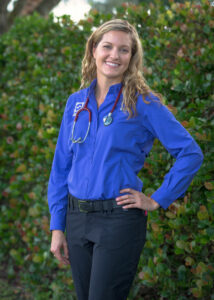Palm Beach Equine Clinic (PBEC), based in Wellington, FL, is home to world-renowned surgeons, board-certified specialists, and state-of-the-art diagnostic technology. In addition, PBEC is home to over 30 veterinary technicians who provide comprehensive support to the veterinarians they work alongside.
PBEC takes pride in the diligence of the technicians who work in collaboration with the veterinarians to maintain the daily functionality of the clinic.
The typical responsibilities of an equine veterinary technician include:
- Manage veterinarians’ schedules
- Stock veterinarians’ mobile unit with supplies, equipment, and medications
- Accompany veterinarians on barn calls and emergency response
- Consult on cases with a veterinarian
- Care for and monitor horses admitted to the on-site clinic hospital
- Plan patient care and follow-up
- Oversee billing and invoices
According to Dr. Marilyn Connor, veterinary technicians are the right hands of the doctors they work with. PBEC employs over 30 technicians and the hands-on experience they have access to gives them invaluable opportunities to learn.
“One thing that is special about PBEC is that we have a full staff of technicians day and night,” said Dr. Connor, who first joined PBEC as an intern and now works as a full-time veterinarian. “They are the ones feeding and caring for horses, administering medications that do not require a doctor, and assisting veterinarians on cases. During the peak of the season, there are roughly 40 doctors with very diverse caseloads for technicians to learn and gain experience from.”
Yessica Arrua is one PBEC technician who has become an accomplice for veterinarian Dr. Natalia Novoa and the clinic in general. Arrua, 22, was born in Buenos Aires, Argentina, but now calls Florida home and is a pivotal part of the PBEC team.
5 Questions for Palm Beach Equine Clinic Yessica Arrua
1. How did you first get involved with horses?
I have been around horses since I was three years old. Both my parents have been working with horses since before I can remember. My dad works with polo ponies and my mom with dressage horses. They both traveled to Florida to pursue work with horses here and that is how I came to be a resident of Wellington and a team member with Palm Beach Equine Clinic.
2. What are your day-to-day responsibilities at PBEC?

I work with Dr. Natalia Novoa, who focuses on both traditional veterinary medicine and alternative therapies like chiropractic adjustments and acupuncture. My day-to-day responsibilities include making sure our truck is stocked with the equipment and medications that we may need. I also look after all the invoices in our system on a monthly basis. Overall, my role is to ensure Natalia has everything she needs and is prepared for our farm call visits.
3. What do you enjoy most about working with equine veterinarians and the horses they treat?
Other than being around horses every day, which is the best part of my job, I really enjoy being able to experience all the different types of cases that come through Palm Beach Equine Clinic. Especially during the winter season, we see so many interesting cases from emergencies to routine exams.
4. Do you have a favorite case?
My favorite cases to work on are the ones where horses have anhidrosis, which we see often in the Florida heat.
There is no universal or proven treatment for anhidrosis, but people often try salts, electrolytes, thyroid supplements, and even beer. But, Dr. Novoa has been able to help these horses with acupuncture. We had one case where the horse didn’t respond to any traditional treatments but started sweating right away during our first acupuncture treatment.
What is Anhidrosis? According to the American Association of Equine Practitioners (AAEP), anhidrosis is a compromised ability to sweat in the face of exercise or high ambient temperatures. This is a potentially dangerous condition for horses, especially working horses, because they thermoregulate (maintain a consistent body temperature) primarily through sweating.
5. What can we find you doing when you aren’t working at PBEC?
You will find me at the beach, reading, and spending time with my family!
Palm Beach Equine Clinic combines the best of conventional and alternative medicine to provide comprehensive, full-body care to both sport and companion horses. Dr. Natalia Novoa specializes in utilizing the best of both approaches to provide unmatched results.
“I believe that treating issues with both alternative therapies and conventional medicine is a perfect approach,” said Dr. Novoa, who has been a full-time member of Palm Beach Equine Clinic since 2011. “We can’t exchange one for other, and the combination usually makes for a great treatment plan.
“A chiropractic adjustment is an alternative therapy that I absolutely recommend,” continued Dr. Novoa. “It’s very useful for a horse that has injuries or soreness issues, but it’s also something that is very important for maintenance. You want to prevent problems instead of treat them. If a misalignment happens, that creates incorrect friction, which then leads to pain in the joints, muscle soreness, and stress on the tendons and ligaments, possibly leading to a soft tissue injury. Another advantage of chiropractic adjustments is that it is useful for FEI competition horses because of the restriction on medications at that level. It’s a way we can effectively treat a problem and stay within the regulations.”
According to Dr. Novoa, veterinarians who incorporate chiropractic adjustments in their treatment options do so with their own style. She has developed a system that she finds most effective, and her secret is out!
Dr. Novoa’s five steps to a chiropractic adjustment:
1. Horse History
Patient history is a pillar of medicine, which provides pivotal information.
“I always want to speak with riders, trainers, and grooms to get an understanding of what they feel and see,” said Dr. Novoa. “They spend the most time with the horse and know it the best. Sometimes, clients ask me to evaluate the horse first and tell them what I see and feel, which is when most people ask me if I have a crystal ball.”
While Dr. Novoa doesn’t travel with a crystal ball, her skill at reading a horse leads her to the second step.
2. Scan Acupuncture Points – “Acuscan”
A scan of the acupuncture points on a horse, which Dr. Novoa calls an “acuscan,” is always her next move. She checks the main acupuncture points from head to tail by using her tool of choice – the round end of a needle cap. This allows her to put firm pressure on a very specific point and then evaluate the horse’s reaction to that pressure.
“A reaction can indicate, for example, left front lameness or a sore neck, etc.,” said Dr. Novoa. “It’s not voodoo; you are piecing together your findings in the exams with the symptoms that the horse is presenting.”
3. Evaluate Horse Movement
After scanning the horse, Dr. Novoa likes to always see the horse move to dig deeper into any reactions she noticed while checking acupuncture points. She starts at the walk and then observes at the trot.
“This is where I incorporate conventional medicine and supplement my evaluation with flexion tests or hoof testers depending on what I see,” said Dr. Novoa. “I want to produce the most detailed picture before moving on to the adjustment.”
4. Make the Adjustments
“I adjust a horse the same way every time,” said Dr. Novoa. “This specific order ensures that I don’t miss anything and the horse receives a thorough adjustment of its entire body with special attention paid to any problem areas that I uncovered earlier in the process.”
Check and adjust these 10 points:
Point 1: TMJ (temporomandibular joint)
Point 2: Poll and neck
See fig. 1 & 2
Point 3: Front limbs, including lower limb joints and carpus (knee)
See fig. 3
Point 4: Shoulder and scapula on both sides to compare one with the other
Point 5: Withers
Point 6: Pelvis and back
See fig. 4




Point 7: Hind limbs, including hocks and stifles
Point 8: Sternum and T1/T2 vertebrae
Point 9: Tongue release
Point 10: Myofascial release if muscles spasm or a tense back and neck are indicated
5. Secondary Acupuncture Point Scan
“The final piece of the puzzle is to scan the acupuncture points again to compare what we had before versus what we have after the adjustment,” said Dr. Novoa. “If there are still reactions, I may do acupuncture or electro-acupuncture and utilize a class four regenerative laser.”
After her secondary scan, Dr. Novoa formulates a short and long-term treatment plan. In her experience, adjustments last for four to six weeks before a follow-up adjustment is indicated. If certain chronic injuries are flaring up, a horse may need an earlier follow-up.
“It’s all about listening to the horse. They will always tell you what they need; you just have to listen!”
Dr. Novoa
Official Veterinarians of 2019 WEF and AGDF Circuits
World-renowned veterinary facility Palm Beach Equine Clinic (PBEC) will return as the Official Veterinarians of the 2019 Winter Equestrian Festival (WEF) and Adequan Global Dressage Festival (AGDF) running January 9 through March 31 at the Palm Beach International Equestrian Center (PBIEC) in Wellington, FL.
A proponent and supporter of horse sport in Wellington and throughout the world, Palm Beach Equine Clinic has served both the year-round residents and visiting horses of south Florida for more than three decades. PBEC’s state-of-the-art clinic is conveniently located at the intersection of Southfields Road and Pierson Road in the heart of Wellington, just minutes from PBIEC, the Equestrian Village, and the International Polo Club Palm Beach. PBEC’s talented team of veterinarians offers its clients and the horses of referring veterinarians unmatched care and an innovative approach to standard and emergency services.
Palm Beach Equine Clinic’s goal is to provide a definite diagnosis and never have to refer a case. In other words, PBEC is the equivalent of the Mayo Clinic for horses.
“Combining the tools of our imaging department, surgical talent, and overall standard of treatment allows us to provide services far beyond what other facilities can provide,” said PBEC President Dr. Scott Swerdlin, who leads a team of more than 40 veterinarians at PBEC. “But even with all the technology we provide, we need the people to make it all happen. That is exactly what we have; veterinarians skilled in diagnostics, technicians dedicated to caring for the horses before, after, and during any procedure, and world-renowned surgeons who can take a diagnosis and treat the problem with positive results for horse and owner. It takes a team and we have one of the best in the world at Palm Beach Equine Clinic.”
PBEC’s services available to new, returning, and referred clients include:
Advanced Diagnostic Offerings
- Computed Tomography (CT)
- Standing Magnetic Resonance Imaging (MRI)
- Nuclear Scintigraphy (bone scan)
- Board-Certified Radiologist on Staff
- Digital Radiography and Ultrasonography
Surgical Offerings
- Three boarded surgeons skilled in performance-related injuries
- Standing surgery pit
- Surgical residency program
- State-of-the-art surgical suite
- Quarantine facilities with secure isolation and individual air flow systems

The expertise and dedication of PBEC veterinarians will be available to all competing horses at WEF and AGDF thanks to an annex office located adjacent to the WEF stabling office on the PBIEC showgrounds as well as at the main PBEC clinic location. PBEC veterinarians are on-call daily at the annex office to assist competitors throughout the shows with diagnostic evaluations and treatments, as well as emergency and standard horse care needs.
“Our location, talents, and dedication to the Wellington community and beyond have helped Palm Beach Equine Clinic to offer the best possible care to some of the world’s top equines during the winter show season,” continued Dr. Swerdlin. “Additionally, our annex office places us in the heart of it all, making advanced veterinary care convenient to equestrians competing at Palm Beach International Equestrian Center. We are very proud of both facilities and the veterinarians who work there, but we are even more proud to be trusted with the care of such special animals!”
For more information on what PBEC has to offer horses competing at WEF and AGDF, stop by the annex office located next to the stabling office on the WEF showgrounds, visit www.EquineClinic.com, or call 561-793-1599.
Save The Date
In addition to being named the Official Veterinarians of WEF and AGDF, PBEC’s own veterinarians will again participate in WEF’s popular Lunch & Learn education series during the 2019 season. Mark your calendars for a presentation on Sport Horse Health on Thursday, March 7, at 11:30 a.m. in The Wellington Club at the WEF showgrounds. Admission to the Lunch & Learn series is free for riders, trainers, and owners and includes a buffet lunch and a chance to win exciting prizes from 2019 Lunch & Learn sponsors.
A horse was recently admitted to Palm Beach Equine Clinic (PBEC), based in Wellington, FL, with symptoms that included bleeding from the nostril. The patient’s referring veterinarian had diagnosed the horse with an ethmoid hematoma, which in layman’s terms is essentially a mass that fills with blood in the nose or sinus cavity.
The patient was placed under the care of PBEC’s board-certified surgeon Dr. Weston Davis and Dr. Michael Myhre. They performed an airway endoscopy to locate and evaluate the hematoma that the referring veterinarian had identified. After confirming the diagnosis, Dr. Davis and Dr. Myhre were eager to ensure that it was the one and only hematoma they were battling.
Computed Tomography
PBEC is one of an elite group of equine veterinary clinics to have a computed tomography (CT) machine in their arsenal of diagnostic imaging equipment. A CT gives veterinarians a unique look at the head, neck, and spine of a horse that they would never be able to accomplish with other imaging modalities. After a CT of the patient’s sinuses, more masses were indeed identified.
“This was a fairly typical presentation of an ethmoid hematoma, but there were certainly more masses than normal,” said Dr. Myhre. “It’s for this reason that the CT was very useful. If we were not able to obtain the scans that we did, we may have missed the masses that were located deeper in the sinus.”
The cause of an ethmoid hematoma is unknown, but the mass resembles a tumor in appearance and development without being neoplastic. Horses with extensive masses may have reduced airflow and an expanding hematoma can cause pressure necrosis of the surrounding bones, but rarely causes facial distortion. Treatments of the ethmoid hematoma can range from conservative management to surgery. The conservative treatment route includes the injection of formalin – a mixture of formaldehyde gas and water – into the mass using a guarded endoscopic needle. Once injected, the mass typically regresses rapidly, but recurrence is common. For some cases, surgical excision is achieved via a frontonasal bone flap procedure.
The Approach
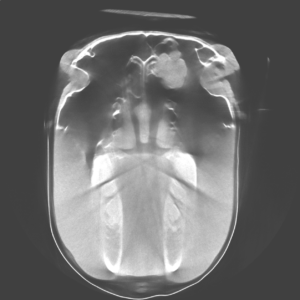
Due to the location and advances nature of the masses in this case, injection was not an option and the CT imaging was used to plan a surgical approach. “After sedation and a local block, we went into the sinus through a flap approach where we took a section of bone, cut it into a flap, and moved it back so we could go into the sinuses through a nice window,” said Dr. Myhre. “We removed a mass four centimeters in diameter as well as several smaller masses two to three centimeters in diameter, then flushed the area and closed.”
According to Dr. Myhre the advantages of a standing procedure included fewer risks from bleeding and fewer risks of recovering from anesthesia.
Post-surgery, the bone flap will require several weeks to heal, but the skin itself healed within one to two weeks, which is when the horse was cleared to return to normal activity.
At first glance, Dr. Santiago Demierre appears to be a young veterinarian making a name for himself in the field of equine medicine. A closer look, however, reveals that he is not only that but also an exceptional example of diligence; he’s also working to become an extraordinary veterinarian while speaking a second language all in a country that is 5,000 miles from his home.
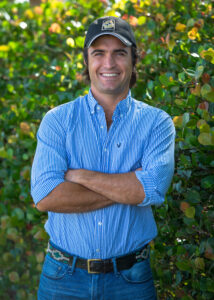
Born in San Antonio de Areco, a small town in the countryside outside Buenos Aires, Argentina, Dr. Demierre is now a 32-year-old veterinarian working with some of the most cutting-edge veterinary technology in the industry at Palm Beach Equine Clinic (PBEC) in Wellington, FL. He attended vet school at Universidad de Buenos Aires and graduated as Medico Veterinario in 2012 before setting a goal to validate his degree in the U.S. While mastering the English language, he enrolled in a certification program called the Educational Commission for Foreign Veterinary Graduates (ECFVG) through the American Veterinary Medicine Association and officially validated his degree in the U.S. in January 2017.
Today, Dr. Demierre is one of 40 veterinarians on staff at PBEC, which includes six boarded specialists and more than 80 technicians and staff members, making it one of the largest sport horse practices in the world.
Three things you may not know about Dr. Santiago Demierre:
1. Horses are in his blood.
Dr. Demierre: My father was a racehorse breeder and trainer, so while I was growing up I spent hours with him and the horses at the farm. I was always very interested in animals in general, not only horses, so even as a little kid I had the idea and the dream that I would be a veterinarian in order to be able to spend as much time with animals as I could. Now, I enjoy so many things about this work, but what really motivates me is the satisfaction I feel when I have a successful outcome on a case.
2. When the opportunity came to study veterinary medicine, he picked up and moved across the world.
Dr. Demierre: A fellow veterinarian who is a friend of mine, Dr. Eduardo Beccar Varela, contacted me with his nephew Dr. Axel Beccar Varela, who is a board-certified surgeon, and they offered me an externship at the clinic where he was practicing in Florida. I took that opportunity and began working in the U.S.
While here, a friend of mine, Gringo Colombres, introduced me to Dr. Scott Swerdlin, president of PBEC. He offered me an internship at PBEC in Wellington and I am now in my fourth season there.
The team at Palm Beach Equine Clinic is made up of great veterinarians and now great friends. There is always somebody from whom you can learn something new every day. Also, it is awesome to be in contact with the world’s top equine athletes. That is what I enjoy most about being part of the team at PBEC—working on performance horse cases. More specifically, I really like preventing and treating lameness in sport horses.
3. True to his Argentinian roots, he does some riding himself.
Dr. Demierre: I love being outdoors. When I am not treating patients or at the clinic, you can probably find me riding polo ponies. If I’m not there, I am either fishing, hunting, or enjoying some time off with my girlfriend.
Even after treating patients in both Argentina and North America, Dr. Demierre’s trans-continental bucket list is far from fulfilled. Next, he hopes to take the skills he has mastered at PBEC and validate his degree in Europe as well.
Want to learn more about the veterinarians of PBEC and what they have to offer your equine athlete or backyard companion horse? Call the clinic today at 561-793-1599 to learn more.
Internal Medicine: What’s it all about?
Palm Beach Equine Clinic President Dr. Scott Swerdlin often says, “If you want to attract equine veterinary specialists, you have to have impressive facilities and technology in place.” Palm Beach Equine Clinic is one of the few veterinary clinics in the country to offer clients the talents of board-certified specialists in nearly every branch of equine veterinary medicine. One such specialist is Peter Heidmann, DVM, DACVIM, a graduate of Tufts University School of Veterinary Medicine, who joined Palm Beach Equine Clinic in 2016.
Dr. Heidmann specializes in the treatment of internal medicine cases at Palm Beach Equine Clinic.
What attracted him? The facilities! In the heart of South Florida’s horse country and at the center of the busiest winter competition schedule in the world, Palm Beach Equine Clinic boasts an internal medicine and infectious disease center at its Wellington-based clinic.
The crown jewel of the center is the ability to stop airborne disease dead in its tracks with the U.S. Department of Agriculture (USDA) approved isolation stalls that completely enclose horses in their own environment with individual filtered airflow systems that do not reach other horses. On top of secure isolation and individual airflow systems in their internal medicine facilities, Palm Beach Equine Clinic also constructed areas for each stall where medications are prepared, equipment is stored, and dirty bedding is handled.
To further mitigate risk, veterinarians, technicians, and staff take every available precaution, including foot baths before entering the stalls and wearing personal protective equipment such as Tyvek suits, gowns, and face masks to provide multiple layers of protection against spreading disease. In some cases, a specific team of doctor, technician, and intern is assigned to a patient and won’t touch another horse for the duration of the treatment.
Accurately Diagnosing Internal Medicine Cases
Diagnostics is not a guessing game at Palm Beach Equine Clinic. With advanced imaging equipment, including a computed tomography (CT) machine, standing magnetic resonance imaging (MRI), and nuclear scintigraphy camera (bone scan), as well as radiography (x-ray) and ultrasonography capabilities, Palm Beach Equine Clinic is armed and ready to quickly and accurately diagnose internal medicine cases.
Dr. Heidmann refers to the facilities and his work at Palm Beach Equine Clinic as a luxury, saying, “I’ve managed many cases in various facilities going all the way back through internship, fellowship, and residency, but this is as nice as any place I have ever worked. It makes the risk to the horses so much lower, but also removes the anxiety for myself because I’m able to look a client in the eye and tell them that there is no risk. I don’t have a concern about disease spreading from one patient to another because at Palm Beach Equine Clinic we have the tools that we need.”
Understanding Internal Medicine
To understand how diagnostic tools are most effective, one must understand what exactly internal medicine is. In an effort to define internal medicine, Dr. Heidmann noted, “What you’ll see on the American College of Veterinary Internal Medicine (ACVIM) website is an emphasis on organ systems and organ system problems – respiratory disease, gastrointestinal disease, and neurologic disease being three of the most prevalent.
“What it really entails is a way of analyzing problems specific to the organ systems,” he continued. “It can be all over the map, and that’s part of what makes the specialty so fun and interesting.”
The most common internal medicine cases can be split into three categories:
- gastrointestinal (GI) problems
- neurological system issues
- respiratory diseases.
Gastro-Intestinal Problems in Horses
“When it comes to GI issues, I usually see horses in two categories,” said Dr. Heidmann. “Number one are the horses that may need to go to colic surgery and the horses that just had colic surgery. The other is horses with intestinal infections, often colitis in which they have heavy diarrhea.”
According to Dr. Heidmann, all of the treatments for colitis tend to boil down to the same thing: replacing their ongoing losses and letting the intestine heal itself. It doesn’t matter if it’s colostrum, salmonella, Potomac Horse Fever, or any other kind of infection.
Equine Neurologic System
The nervous system in a horse is made up of the brain, spinal cord, and several different kinds of nerves that are found throughout the body. These create complex circuits through which animals experience and respond to sensations. Unfortunately, many different types of diseases can affect the nervous system, including birth defects, infections, inflammatory conditions, poisoning, metabolic disorders, nutritional disorders, injuries, degenerative diseases, or cancer.
“Palm Beach Equine Clinic has an incredible ability to do advanced imaging and diagnostics on neurologic conditions,” said Dr. Heidmann. “With equipment like the standing CT, we can do scans of the head and neck with contrast – a CT myelogram – which really increases our ability to diagnosis a condition.”
Palm Beach Equine Clinic is able to locate problems not only on the top or bottom of a horse’s neck, but also on the sides of the neck – an area previously inaccessible to view even from myelograms under anesthesia.
“That’s part of the satisfaction of the job that I do; It’s not just ‘here is my experience and here is what I guess is going on.’ I have all of these options at my fingertips for diagnostics and tests. We can confidently confirm our clinical suspicions and then do treatment based on that.”
Respiratory Disease in Horses
As common as a cold for a human or acute in nature, Dr. Heidmann further breaks down the different kinds of common respiratory disease in horses into three categories:
When Margo Crowther of Fort Myers, FL, was looking to add a new addition to her string of barrel racing horses, she made one very important phone call. That first call was to Palm Beach Equine Clinic (PBEC). Dr. Weston Davis, board-certified surgeon and veterinarian at PBEC, has been working with Crowther for several years and has helped maintain her horses and even performed some career-saving procedures.
In 2016, Dr. Davis helped Crowther and her 2012 Quarter Horse mare Shes Packin Fame or “Sissy” return to the ring after what could have been a detrimental injury. Sissy suffered a rare slab fracture to the central tarsal bone in her left hock while competing in a barrel racing competition. After a diagnosis aided by PBEC’s state-of-the-art diagnostic imaging equipment and a surgery performed by Dr. Davis, Shes Packin Fame not only returned to running barrels, but the five-year-old mare was also back to winning the next year. Click here to learn more about Sissy!
Crowther Meets “Mater”
This time, Crowther turned to Dr. Davis to ensure that her intended purchase of a new horse was a good fit. When she met Grandiose Guy, known to her as “Mater,” she had to have him. The Quarter Horse gelding was named the Barrel Futurities of America (BFA) Horse of the Year just after she purchased him in 2017, crowning him the top four-year-old in the country.
“When I was thinking about buying him, I called Dr. Davis and sent him videos of the horse working to review,” said Crowther, who started the purchase process late last year. “The horse was in Georgia, so he reviewed them from PBEC in Wellington and gave me the stamp of approval. Once a pre-purchase was performed, I sent all the x-rays to Dr. Davis and he told me to move forward.
“I trust Dr. Davis and the team at PBEC so much!” continued Crowther. “Barrel horses work hard and it’s so important to have a great relationship with the veterinarian who oversees their care and knows them well in order to keep them happy and healthy.”
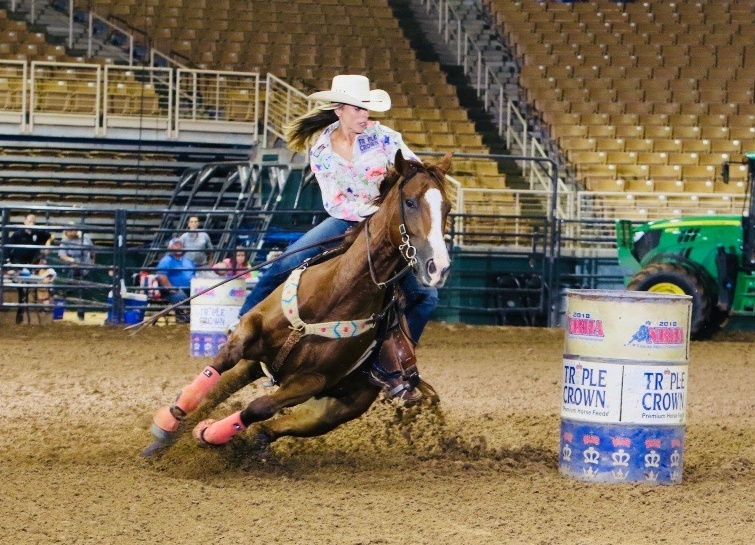
Crowther purchased Mater and started running him at the start of 2018, bringing him to the largest one-day rodeo, The American, in the Dallas Cowboys stadium in Texas in February. The competition had a $1 million payout and Mater and Crowther placed fifth.
“After so many runs, we brought him home from Texas and got him over to Dr. Davis for any maintenance work that needed to be done to keep him feeling his best,” said Crowther. “I am very picky about where I take my horses; there has to be good ground and I will not run their legs off. In conjunction with that, maintenance work with Dr. Davis is important. He performs flexion tests, utilizes the imaging at PBEC if necessary, and makes recommendations about my horses’ health and overall well-being.”
Dr. Davis sent Mater home from PBEC with a clean bill of health and Crowther gave the gelding a little time off before their next run. After returning to work, Mater headed to the National Barrel Horse Association (NBHA) Florida State Championships in Kissimmee in mid-June.
Success for Crowther and Mater
Crowther’s diligence and Dr. Davis’ knowledge paid off in full when Mater won both his runs and clinched the open final at NBHA Florida State Championships. With more than 700 entries, Mater and Crowther topped them all and were crowned overall champions of the event.

“PBEC and Dr. Davis have been a huge part of the success I have had with all of my horses,” said Crowther. “They are always there when I need them, whether I’m headed to the clinic or they are coming to me in Fort Meyers. It’s nice to be able to know your vet will be there for you whenever you need them.”
Palm Beach Equine Clinic (PBEC) is changing the prognosis for condylar fracture injuries among sport horses. Advances in imaging, surgical talent, and the facilities necessary to quickly diagnose, treat, repair, and rehabilitate horses with condylar fractures have recently improved immensely.
Most commonly seen in Thoroughbred racehorses and occasionally polo ponies, a condylar fracture was once considered a career-ending injury. Today, however, odds are in favor of a full recovery with horses regularly returning to competition in their respective disciplines.
What is a Condylar Fracture?

A condylar fracture is a repetitive strain injury that results in a fracture to the cannon bone above the fetlock due to large loads transmitted during high-speed exercise. 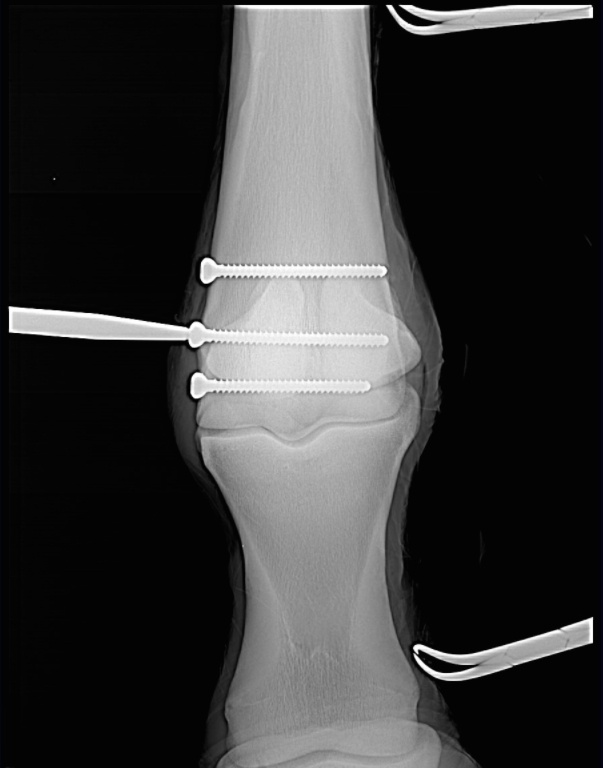
Scan showing the screws inserted during surgery (right). This patient, a Thoroughbred racehorse, walked away from surgery comfortably and is recovering well.
A condylar fracture is a repetitive strain injury that results in a fracture to the cannon bone above the fetlock due to large loads transmitted over the cannon bone during high-speed exercise. On a radiograph, a condylar fracture appears as a crack that goes laterally up the cannon from the fetlock joint and out the side of the bone, essentially breaking off a corner of the cannon bone, sometimes up to six inches long.
“A condylar fracture is a disease of speed,” said Dr. Robert Brusie, a surgeon at PBEC who estimates that he repairs between 30 and 50 condylar fractures per year. “A fracture to the left lateral forelimb is most common in racehorses as they turn around the track on a weakened bone and increased loading.”
Condylar fractures are further categorized into incomplete and non-displaced (the bone fragment hasn’t broken away from the cannon bone and is still in its original position), or complete and displaced (the fragment has moved away from the cannon bone itself and can often be visible under the skin).
Additionally, condylar fractures can occur laterally or medially. According to fellow PBEC surgeon Dr. Weston Davis, most condylar fractures tend to be lateral on the outside condyle (a rounded projection on a bone, usually for articulation with another bone similar to a knuckle or joint).
“Most lateral condylar fractures are fairly simple for us to fix,” said Dr. Davis. “Medial condylar fractures tend to be more complicated configurations because they often spiral up the leg. Those require more advanced imaging and more advanced techniques to fix.”
What is the Treatment?
The first step in effectively treating a condylar fracture through surgery is to accurately and quickly identify the problem. PBEC’s board-certified radiologist Dr. Sarah Puchalski utilizes the advanced imaging services at PBEC to accomplish exactly this.
“Stress remodeling can be detected early and easily on nuclear scintigraphy before the horse goes lame or develops a fracture,” said Dr. Puchalski. “Early diagnosis of stress remodeling allows the horse to be removed from active race training and then return to full function earlier. Early diagnosis of an actual fracture allows for repair while the fracture is small and hopefully non-displaced.”
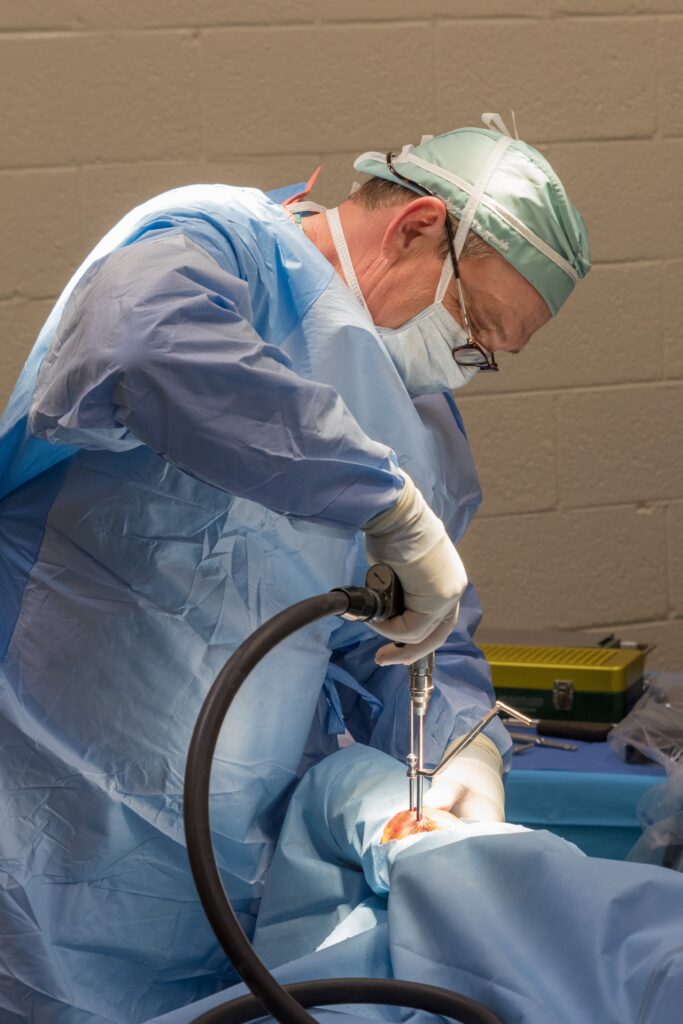
Once the injury is identified as a condylar fracture, PBEC surgeons step in to repair the fracture and start the horse on the road to recovery. Depending on surgeon preference, condylar fracture repairs can be performed with the horse under general anesthesia, or while standing under local anesthesia. During either process, surgical leg screws are used to reconnect the fractured condyle with the cannon bone.
“For a very simple and small non-displaced fracture, we would just put in one to two screws across the fracture,” explains Dr. Davis. “The technical term is to do it in ‘lag fashion,’ such that we tighten the screws down heavily and really compress the fracture line. A lot of times the fracture line is no longer visible in x-rays after it is surgically compressed. When you get that good compression, the fractures heal very quickly and nicely.”
More complicated fractures, or fractures that are fully displaced, may require more screws to align the parts of the bone. For the most severe cases of condylar fractures, a locking compression plate with screws is used to stabilize and repair the bone.
PBEC surgeon Dr. Jorge Gomez, approaches a simpler non-displaced condylar fracture while the horse is standing, which helps to aid in a faster recovery and more successful surgical outcome.
“I will just sedate the horse and block above the site of the fracture,” said Dr. Gomez. “Amazingly, horses tolerate it really well. Our goal is always to have the best result for the horse, trainers, and us as veterinarians.”
According to Dr. Gomez, the recovery time required after a standing condylar fracture repair is only 90 days. This is made even easier thanks to a state-of-the-art surgery pit installed at PBEC. The four-and-a-half-foot recessed area allows doctors to perform surgeries on anything from a horse’s hock and below from a standing position. Horses can forgo the risks of general anesthesia for a mild sedative and local nerve blocks, greatly improving outcomes.
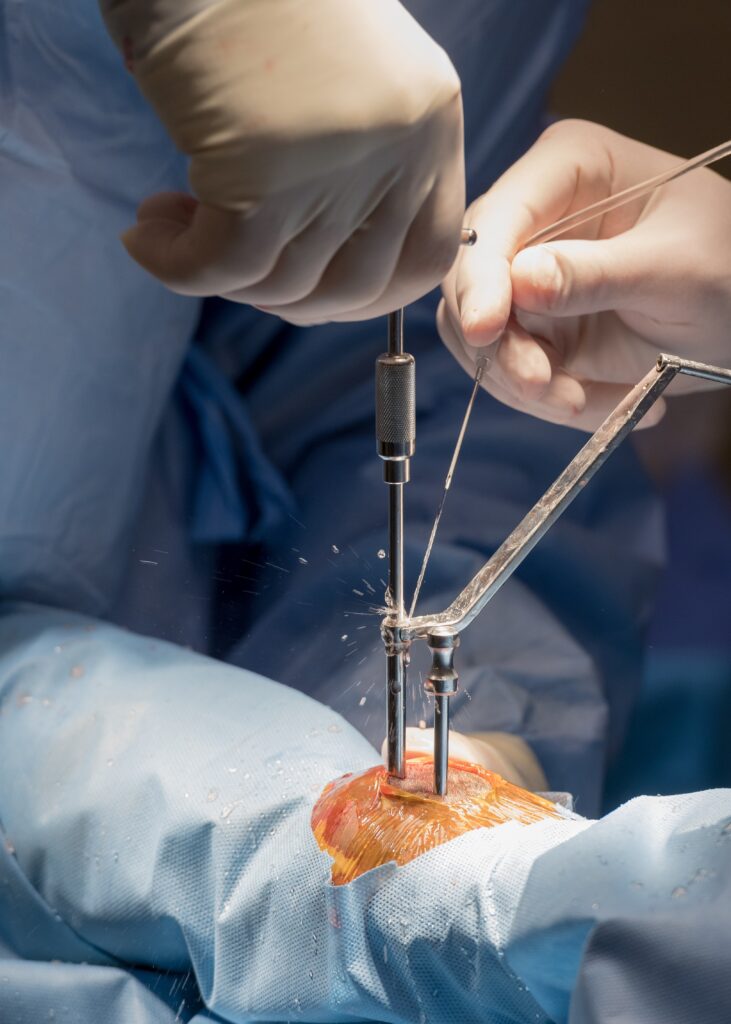
“A condylar fracture was once considered the death of racehorses, and as time and science progressed, it was considered career-ending,” concluded Dr. Brusie. “Currently, veterinary medical sciences are so advanced that we have had great success with condylar fracture patients returning to full work. Luckily, with today’s advanced rehabilitation services, time, and help from mother nature, many horses can come back from an injury like this.”
Success Story: Ameloblastic Fibroma
When a middle-aged mare with a mysterious mass in her mouth came under the care of Palm Beach Equine Clinic in Wellington, FL, Dr. Weston Davis pulled out all the stops to find a definitive diagnosis. The oral mass was growing at a rapid rate and was positioned just behind the bottom incisors on the left bar of the horse’s mouth.
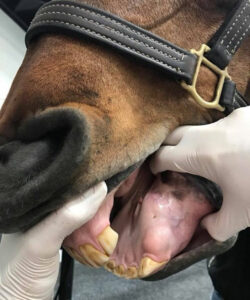
A view of the oral mass being examined by Dr. Davis.
Computed Tomography Imaging
First, Dr. Davis turned to the use of PBEC’s state-of-the-art computed tomography (CT) machine to obtain an image of the mass and its exact location within the horse’s mouth. Then, a surgical biopsy was performed and the histopathology, or microscopic examination of the biopsied tissue, revealed the manifestation of an ameloblastic fibroma. An ameloblastic fibroma is a mixed odontogenic (dental) tumor composed of soft tissues.
“Although this tumor type rarely metastasizes, it tends to be locally invasive and aggressive, requiring the complete removal and/or aggressive radiation therapy,” said Dr. Davis, who is a board-certified surgeon at PBEC.
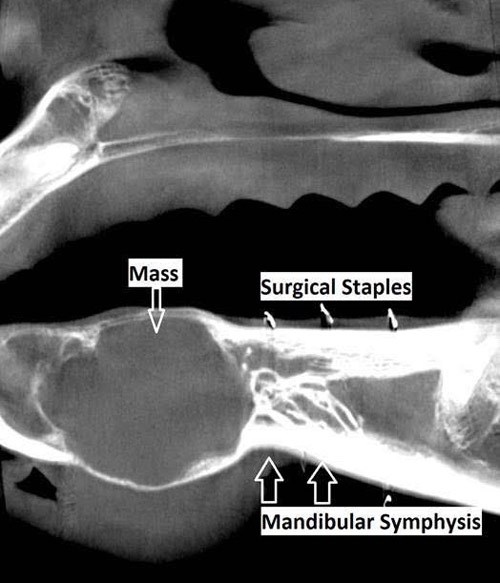
Ameloblastic Fibroma Treatment Plan
A tumor of dental origin is rarely found in humans and is extremely rare in equines, but upon diagnosis, Dr. Davis quickly identified a treatment plan, saying, “In this case, the CT mapping that was performed enabled us to completely remove the tumor via a rostral mandibulectomy with preservation of the mandibular symphysis (the joint between the two halves of the mandible).”

The horse underwent surgery at PBEC and Dr. Davis removed the tumor along with the rostral (front) mandible, which includes the lower incisor teeth and essentially the entire front portion of the lower jaw of the horse.
The obvious question that arises from a rostral mandibulectomy is “how effectively will the horse be able to eat without bottom teeth?” For this patient, however, the answer came quickly and it was nothing short of encouraging. The mare returned to eating just hours after surgery and, at her two-week checkup with Dr. Davis, was back on a normal diet of hay, grain, and – of course – treats.
According to Dr. Davis, the majority of animals that undergo this type of surgery often compensate well and have little trouble eating. For this mare, her only struggle in the future may be the prehension of very short and/or tough pasture.

A view of the lower lip of the horse after surgery. 
Two weeks post-surgery and no visible signs of a rostral mandibulectomy.
Post Mandibulectomy Surgery
Also at two weeks post-surgery, Dr. Davis approved the mare for light riding activity with a hackamore. The mare competed in the jumper ranks before surgery and at a four-week checkup, Dr. Davis gave the all-clear and the mare returned to full work. She even made a comeback in the competition ring at Palm Beach International Equestrian Center with very little visual evidence that a mandibulectomy was ever performed.
“This was a rare tumor and a rare surgery, but the horse recovered incredibly well and fast!” said Dr. Davis. “It was an excellent patient outcome. “I gave her the all-clear at four weeks post-surgery and she is already back to winning classes.”
All Photos Courtesy of Dr. Weston Davis
Meet PBEC Veterinarian Dr. Marilyn Connor
For some, becoming an equine veterinarian was always their calling. But, for Palm Beach Equine Clinic’s own Dr. Marilyn Connor, a diverse education and a healthy serving of life experience gave her options. Originally hailing from just north of Dallas, TX, Dr. Connor grew up around horses, but initially set her sights on going to medical school to study human medicine. Her undergraduate studies started at Tulane University in New Orleans, LA, before she transferred back to her home state of Texas to graduate in 2006 with honors from Texas A&M University with a Bachelor of Science degree in biomedical science and minors in chemistry and business.
After conducting a Master’s level research project on the effects of social stress on an animal model of multiple sclerosis, Dr. Connor broadened her horizons and moved to New York. While in New York, Dr. Connor spent three years as a research analyst and junior stock trader at a New York-based hedge fund. On her weekends, Dr. Connor volunteered at a therapeutic riding program in Brooklyn, NY, where she taught riding lessons to children, adults, and veterans. It was during her time volunteering at the therapeutic riding program, that Dr. Connor realized she wanted a career where she was able to help both people and animals. Ultimately, this passion lead her back to Texas where she attended four years of veterinary school at Texas A&M University.
Here’s the rest of Dr. Connor’s story
What led you to an internship at PBEC?
In veterinary medicine, unlike human medicine, it is optional to complete an internship after graduation before going into practice. It’s estimated that by completing an equine internship, because of the high caseload and number of hours worked, you gain anywhere from three to five years of experience. Because I was a non-traditional vet student, with a career before I started vet school, I really wanted to jumpstart my career so I could become an experienced veterinarian quickly. I felt that completing an internship was a good investment of my time, so I could get those additional hours of mentorship and become a excellent veterinarian. I considered many of the best practices in the country, mostly in California and Colorado, when searching for an internship. I met Dr. Swerdlin at an American Association of Equine Practitioners conference in Las Vegas two years ago and he invited me to come to Palm Beach Equine Clinic for a visit. I fell in love with the practice and the people, and felt the internship offered a good balance of autonomy to act as a doctor while still providing mentorship for a young veterinarian. One thing that’s unique about PBEC is that we have a full staff of technicians day and night so I knew, as an intern, I would be able to rest in the evenings so I could focus my time on learning and becoming a good veterinarian. In some practices, interns are expected to act as a doctor during the day, but at night they are required to come to the hospital to feed horses, cleaning stalls, or administer simple medications which could be done by a technician. Another big motivation for me was that we have so many doctors to collaborate with. During the peak of season, there are roughly 40 doctors here to learn and gain experience from. I was also impressed with the very diverse case load that comes into PBEC. Those are some of the reasons I joined PBEC as an intern in July 2017.

What is your experience with horses outside of being a veterinarian?
I like to say that I was riding horses since before I was born. My mom had horses and she rode while she was pregnant with me. When I was eight I got my first horse and rode western; mostly trails, pleasure, and a little bit of barrels, until I was twelve. Then I switched over to English riding and showed in both the Hunter and Jumper divisions until I was 18 and left for college. I didn’t have the means to bring a horse with me to school, so there was a period of about two years when I was only riding when I would come home.
During my sophomore year of college, I got a job at a barn exercising and training first and second-level dressage horses. Later in college, I had a friend who did competitive endurance racing and she had some spare horses that she needed ridden in competition so I did that and it’s something that I stayed with until today. As you can see, I have just about done it all when it comes to riding. I also have trained young horses and taught riding lessons since I was about 15 years old. After college, I spent some time teaching at a therapeutic riding center and this was one of the things that ultimately made me realize I wanted to be an equine veterinarian so that I could help both horses and the people that love them.
What is your typical day like at PBEC?
One of the things I love about being a veterinarian, is that no two days are the same! Most days, I come into the hospital first thing in the morning to, physical examinations and treatments on my hospitalized patients that are staying at PBEC. On some days, I manage anesthesia for the surgeries taking place at the clinic, so I must make sure the patient is physically healthy enough to handle anesthesia and undergo surgery. I then administer a combination of medications to induce and maintain them under general anesthesia for the surgery. I monitor them throughout the procedure and stay with them until they have fully recovered after surgery and are able to stand up and walk back to their stall. I am happy to report I will be staying on at Palm Beach Equine as an associate, so I am working on developing my client base within the clinic. now I make farm calls to see my patients and I also seeing many of the call-in appointments for routine veterinary care as well as daytime emergencies such as when people discover their horse has an injury or is sick. I have taken continuing education courses that are specific on dentistry, so I also see patients that require dental care such as having their teeth floated. I am also certified in veterinary chiropractic, so that’s another service that I bring to the clinic.
What’s your favorite kind of case to work on?
I like so many things about my job, but I really like helping my clients to maximize the health of their horses through nutrition, wellness care, and preventative medicine. I also like working with lameness in horses; diagnosing orthopedic conditions and treating them with a combination of traditional joint injections, regenerative medicine, rehabilitation, and alternative medicine. It’s very rewarding to help my equine patients to be able to do their job at a high level and stay sound. I also enjoy working with clients to understand things they can do to prevent their horse from needing those kind of interventions later on in life.
I do a lot of the veterinary care for the Vinceremos Therapeutic Riding Center, which PBEC supports. It is very rewarding to be able to give back to a cause that is important to me, but now in a different capacity as a veterinarian.
What do you enjoy most about working for PBEC?
One thing I enjoy about working at PBEC is that we are well-equipped with the most advanced technology and equipment rarely offered outside of a university setting. We have an amazing hospital facility, top quality surgeons, the latest in regenerative medicine, and the most advanced diagnostic tools including radiography, MRI, nuclear scintigraphy and our new Computed Tomography (CT) machine, which very few practices have. As a doctor, it is amazing to have every tool at my disposal, so I can provide the best quality veterinary care for my patients. But I think my favorite thing about working at PBEC and what really makes us unique as a practice is that we have an exceptional team of doctors with different backgrounds and slightly different skill sets. While every doctor essentially operates autonomously within the practice, it is still one big team. I have so many doctors I can call day or night if I am stumped on a case or need assurance that the treatment plan is appropriate. At PBEC we always collaborate to provide the best quality care for our patients.
